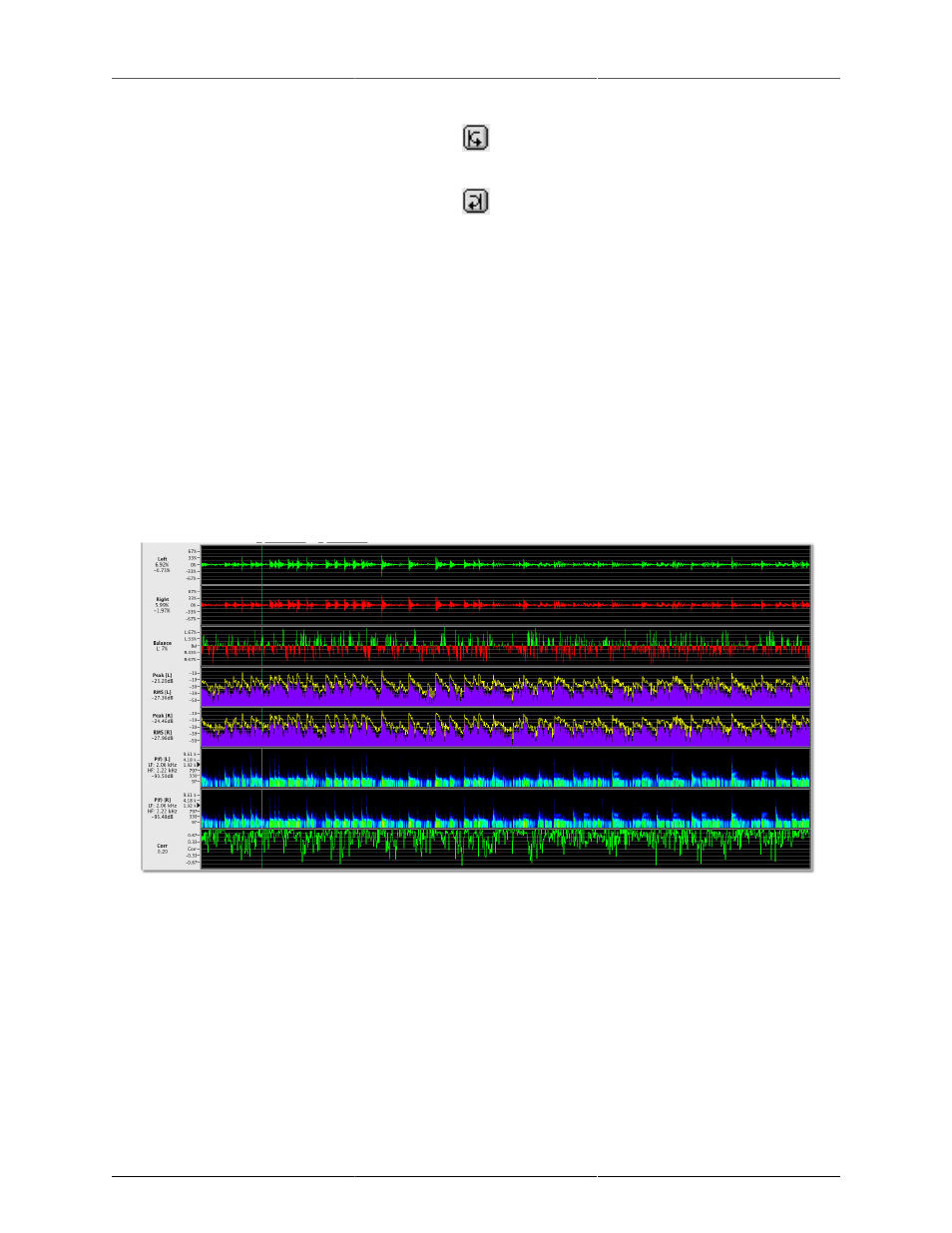Loop start button, 101 10.8. loop end button, 101 10.9. capture overview window: ribbons – Metric Halo SpectraFoo User Manual
Page 101

Capture and Storage
101
Figure 10.7: Loop Start button
Figure 10.8: Loop End button
These buttons set the start and end times of a loop- loops are shown in the ribbons as a purple highlighted
area. When you click one of the buttons, the timecode value of the current cursor position will be copied
into the corresponding timecode field. Click in the appropriate field to edit loop start and end points from the
keyboard. You can also use the mouse to edit loop points in realtime; moving the mouse pointer to one of the
loop boundaries causes it to change into a loop handle. Click and drag to change the loop points in realtime.
As you drag the loop handle around, the loop point will update instantaneously. You don't even have to let
go of the mouse button.
• ∆: This field shows the change in time between the loop start and end times. This is also represented
by the purple area within the ribbon.
• Draw Dual Trace: Clicking this check box will cause the envelope ribbon to display the left and right
channels superimposed on top of each other.
• Do Data Slicing: Clicking this check box will cause the “slice” of data that lies underneath the cursor to
be displayed by the realtime instruments. This is described in the
Figure 10.9: Capture Overview Window: Ribbons
• Envelope: The Envelope overview shows the amplitude envelope history of the captured waveform. This
is a very common display for digital audio editing and can be a helpful point of reference. You can
zoom in to display the capture on a sample by sample basis. When captures are played back, the cursor
moves across the ribbons until it gets near the end of the window. At this point, the ribbons begin to
scroll very smoothly creating the effect of animation. As a result, when you have the envelope overview
zoomed in all the way and play the capture, the display can function as a nifty storage oscilloscope (most
storage scopes are not capable of playback). The Details readout shows the percentage of amplitude
referenced to full scale.
• Power Balance: The Power Balance ribbon is an overview history of the left/right power balance meter.
Drag the cursor along the ribbon and the Details readout will track the amount that the power in one
channel exceeds the other as a percentage of the sum of the total power in both channels.
